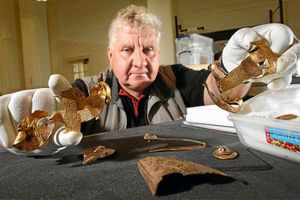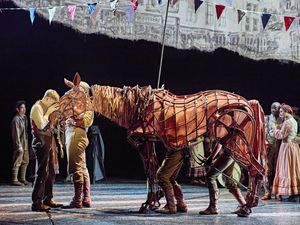Seventh anniversary of the Staffordshire Hoard
It was the largest collection of Anglo-Saxon gold and silver ever found in the world and now the historic discovery of the Staffordshire Hoard has marked its seventh anniversary.

Yesterday, the occasion was marked on social media with hoard's official page on Twitter posting memories and pictures from the momentous day the find was unearthed.
Among the pictures shared to more than 5,000 followers included the trio of Fred Johnson, owner of the land where the items were discovered, Staffordshire archaeologist Steven Dean and Terry Herbert, the metal detector who found the first pieces.
Further pictures posted also included the first excavations of the site on the farmland in Hammerwich, Lichfield.
People also shared their memories when news broke of the true extent and significance of the discovery.
Sarah Perry, from Norwich, said a picture of the hoard first being unearthed gave her 'goosebumps' while archaeologist Jenni Butterworth, who works with the hoard, recalled how 'excited' experts were on describing the pieces.
The excitement was shared by many and photographs were also posted of long queues at the Birmingham Museum and Art Gallery as well as the Potteries Museum in Stoke-on-Trent to see the first temporary displays.
The two sites remain the main homes for the items which have since undergone extensive conservation work.
In 2009, Mr Herbert reported his initial findings to the region's finds liaison officer which prompted a full excavation funded by English Heritage and Staffordshire County Council.
More than 3,500 items were unearthed containing 5.094 kilogrammes of gold, 1.442 kilogrammes of silver and 3,500 cloisonné garnets.
They have been dated to the 6th and 7th centuries to the time of the Kingdom of Mercia.
Pieta Greaves, hoard conservation co-ordinator at Birmingham, said: "In terms of what it means to be from the 7th century the hoard has changed the way we think about it. It was a lot of gold and silver. We have never found as much as this. "
When it was formally classed as treasure it was valued at £3.29million and £900,000 was raised in public donations to 'save it', along with large grants from local authorities and the National Heritage Memorial Fund.
It is now jointly owned and looked after by Birmingham City Council and Stoke-on-Trent City Council.





